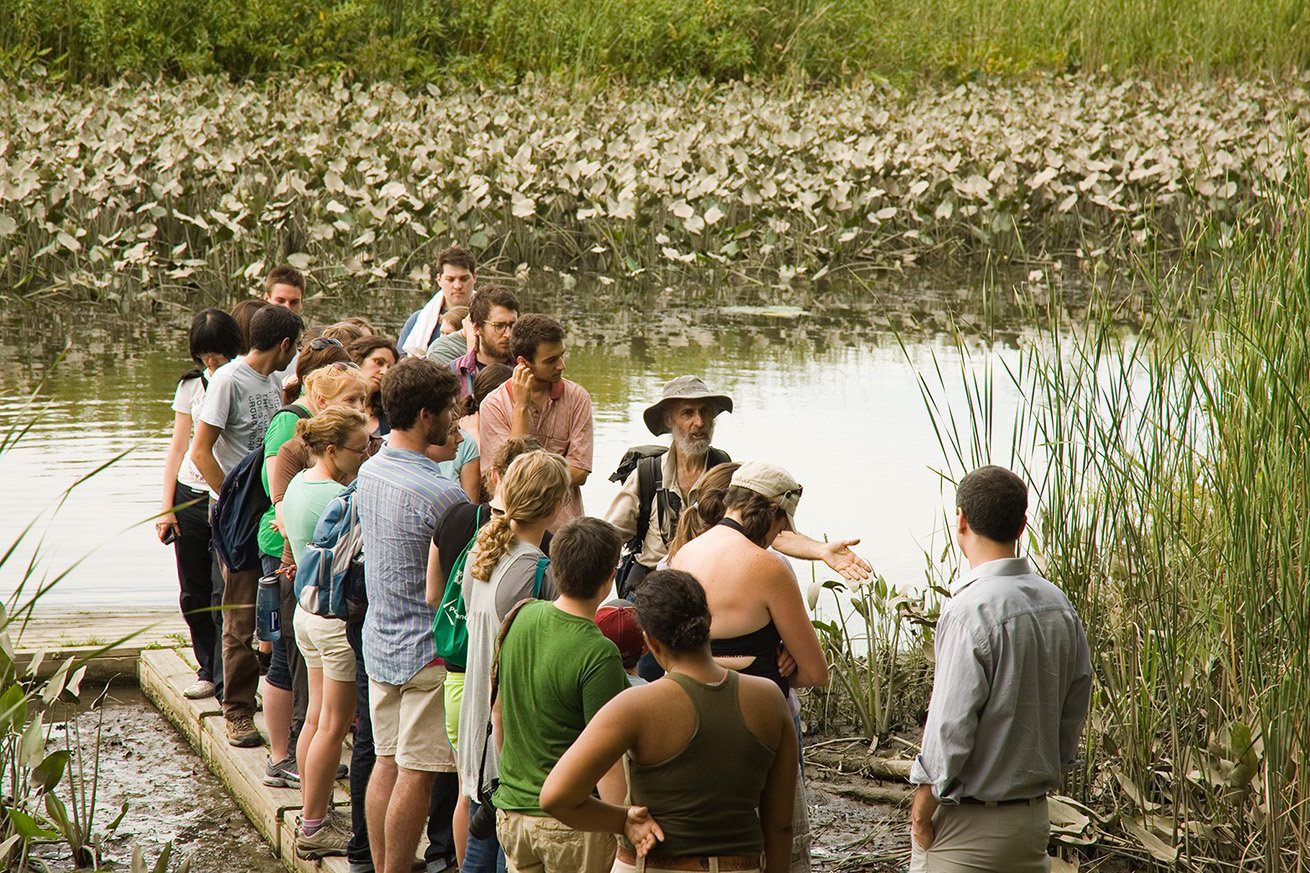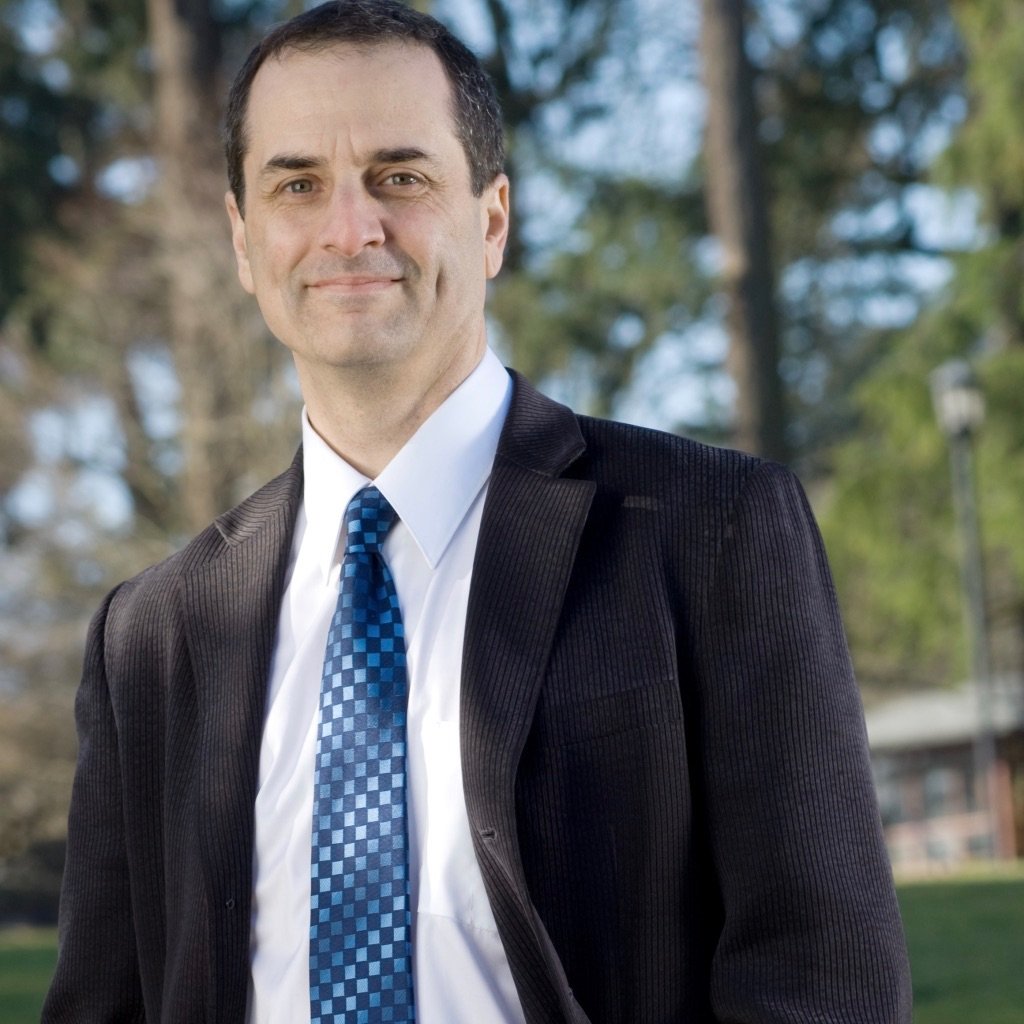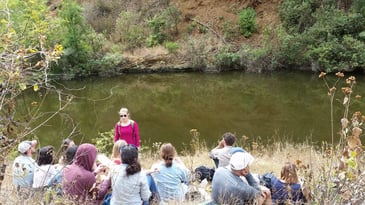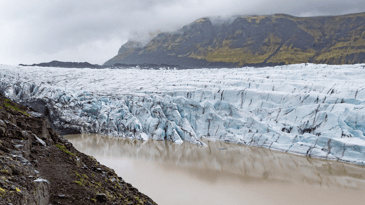5 Myths About Climate Change & The Need for Environmental Education

We are in the middle of a crucial battle to distinguish fact from fiction. Increasing polarization and a growing distrust of the news media are creating microcosms of "reality" based on political and cultural bias.
This battle over fact versus fiction is beginning to color every aspect of how groups see the world, but it has long plagued the environmental movement. Climate denialism—cynically adopted by political leaders primarily in the United States, and promoted here by partisan media—is a well-known challenge for which public education is critical.
These misconceptions about climate change cloud the understanding of everyday people and stall efforts to mitigate global warming. With the IPCC findings, we know what will happen if we don't protect the environment. Our job as environmental educators is to spread that knowledge and ensure it doesn't come to pass.
The key to debunking myths about climate change
With regard to environmental crises like climate change, the words of Nelson Mandela ring true:
“Education is the most powerful weapon which you can use to change the world.”
There has never been a greater need for environmental educators than right now. A generation of young people is growing up with little access to nature, missing out on critical formative experiences that lead to ecological literacy; cognitive, physical, and spiritual development; and an ethic of stewardship and care towards the planet.
Leading environmental educators are tackling this challenge by creating innovative, entrepreneurial programs to engage children from all backgrounds in an exploration of the miracles of nature all around them. They learn their craft at environmental education programs like the one offered as part of Bard's Graduate Programs in Sustainability.
In addition, environmental education is critical to address the far-reaching environmental challenges of the current moment: climate change, plastics pollution, access to clean drinking water, species extinction, and more.
Popular support for changed behavior and policy can only take us so far. To see real and lasting change, people need to adopt holistic ways of thinking. They need to deeply understand the effects of not caring for the environment and how their everyday actions can compound environmental damage. This creates new patterns of living that lead both to significant changes in careless, high-consumption, wasteful lifestyles as well as a desire for meaningful engagement with nature and the community.
These desired outcomes can only be achieved when environmental educators address deeper myths and confusion about the climate crisis.
Common misconceptions about climate change
Here are five, widespread environment myths that environmental educators need to push back against.
1. The damage is done, and our environmental situation is beyond hope of repair.
This is the most dangerous of the myths about the environment that environmental education efforts have to overcome. And it's similar to giving into existential thoughts of, "No one cares about the environment."
This belief, once internalized, ensures that a person will take no action to better environmental conditions. The truth is that the earth and earth systems are extraordinarily resilient. Save the planet? Please — the planet will be fine. As the comedian George Carlin once said — if humans cause too much trouble, “The planet will shake us off like a bad case of fleas.” Left alone, and given time, natural ecosystems recover naturally.
The issue is not saving the planet, but rather protecting the planet’s existing ecological systems so that humans can prosper on a healthy planet. And seen in this light, defending the environment is never an all or nothing proposition — every acre of land protected, every stream cleaned up, every toxin reduced, all of it matters.
Take climate change. Since humans started burning coal and gasoline at scale 130 years ago, the earth has warmed almost 2 degrees F. At this point, we have locked in another 1 degree F, and probably 2 degrees F. But beyond that, the future is in our hands. (Check out this blog post by Dr. Eban Goodstein for a detailed exploration of this question: are we too late to stop global warming?)
As Bard MBA professor and sustainable business pioneer Hunter Lovins likes to say, “We are in a Race to stop Global Warming. And that’s the good news. We haven’t lost yet.”
We have to live our lives recognizing this—because every tenth of a degree matters. What we do with our lives, in the next few years and few decades, will profoundly shape the future for ourselves, our children, their children, and a thousand human generations to follow.
2. Climate change and other environmental challenges are not affecting me personally.
Most Americans accept that the environment needs protection. For example, recent polls show that 73 percent of Americans now accept that climate change is happening. This is a significant increase from years past, which is important if lasting change is going to take place. There is also growing evidence that Americans are prioritizing climate change in the way they vote: 42% of registered voters said that climate change was "very important" to their vote in the 2020 elections. In the past, the environment and climate have ranked well below issues like the economy, health care, or immigration, but in the last two years, more and more voters are ranking climate as a top issue.
Scientists and scientific organizations have long issued repeated pleas for humans to take a longer view, and more recently, massive climate change protests driven by young people have brought greater attention to the issue. For example, on November 13, 2017, the international journal Bioscience published a letter entitled World Scientists’ Warning to Humanity: A Second Notice. Surveying global environmental challenges from ocean pollution to climate change to species extinction, the letter cautioned: “To prevent widespread misery and catastrophic biodiversity loss, humanity must practice a more environmentally sustainable alternative to business as usual. The signature list included more than 15,000 scientists in 184 countries.
For the outstanding climate deniers, a major problem is that today’s environmental problems, at least in developed countries, are not simple to observe. Although most Americans believe climate change is happening, only 63% believe that it will affect them personally. Over time, and across the globe, the effects are enormous and if we look back over the last three decades, we can see how climate change is leading to increased droughts, intense storms, loss of coral reefs, shrinking glaciers, bigger and more frequent wildfires, and rising seas.
But when many people (particularly non-coastal people) look at the short-term, in their own personal day-to-day, they can easily miss these changes, or following climate-denying politicians, blame observed weird weather occurring year after year on “natural cycles”.
A key need for environmental education is simply helping people see and understand the changes happening all around them.
3. I live in the city. “Nature” and natural ecosystems are “out there” in the country or wilderness, so protecting nature isn’t relevant to me.
In an increasingly urban world marked by addiction to screens, fear of strangers, and public and private landowners wary of lawsuits, fewer and fewer people — and especially fewer and fewer children — have a direct connection to “wild” nature. In his well-known book, Last Child in the Woods, author Richard Louv points out the consequences of what he calls “nature deficit disorder”. They include limits on opportunities for physical, character, and spiritual development. And Louv also notes that children who fail to develop a ‘hands-on” appreciation for ecological processes, along with a sense of awe and wonder about nature, will not naturally care to defend it.
A related, and critically important issue is the “Unsustainable Whiteness of Green.” Where will rising sustainability leaders come from? In an increasingly diverse country, if sustainable development becomes an issue only for privileged white kids from the outer suburbs, then the movement will fail. In fact, many of the critical environmental challenges of the 21st century—from access to clean water and air, to rising sea levels, to more intense heatwaves—are hitting urban folks the hardest. Again, environmental education is critical to helping people see the connections between the ecology of the city and the health of the planet.
To counter these trends, a new generation of environmental educators is pioneering approaches to engaging children—and broader communities—in understanding nature and the ecological system right there in the urban and dense suburban “backyard.” Involving young people in urban farming, urban stream and river restoration, and investigations of waste, water, food, and energy systems in an urban context, all of these efforts connect young people to the big questions of global sustainability. Yes, it is important to get kids out into the woods, but even more important is exploring the ecology of one’s own neighborhood.
4. I know there is a crisis, but I can’t make a difference in my ordinary life.
When it comes to environmentalism and sustainability, the challenges we face today are massive, and can easily paralyze you. Yet we all have to decide — in the face of knowledge — how to live our lives. Empowering people to take action is the ultimate goal of environmental education. There are three ways we can all make a difference:
-
Start walking the talk. No one is 100% green, but every change you make in the direction of sustainability reinforces your own conviction to do more and sends signals to your neighbors — and the marketplace — about the need for change. For example — don’t want to go vegetarian? Instead, for a surprisingly big impact, eat less beef and more chicken. Another easy step: move the money in your 401-K into sustainable investments. Or save money by insulating your house, or going solar.
-
Change your workplace. Get on the green team where you work or go to school. Don’t have one? Start one. Big changes can come by driving down your organization’s carbon footprint, reducing food waste, and boosting recycling.
-
Change your politicians. Identify your state and local elected officials, and go visit — it is shockingly easy to make an appointment to talk to them. Tell them you want 100% clean energy, better parks, and clean water. State and local political action is a major driver of environmental improvement.
Always remember the anthropologist Margaret Mead’s famous quote: “Never doubt that a small group of thoughtful, committed citizens can change the world; indeed, it's the only thing that ever has.”
5. I would personally love to pursue a career as an environmental educator — but people don’t really get paid to do this, do they?
To dispel the climate change misconceptions above, there is a growing need for professionals who can create, manage, scale, and teach in environmental education programs. To address this need, Bard College recently launched an Environmental Education Master's — one of only six comparable master’s programs in the United States. Through intensive academic training, real-world professional experience, and career development opportunities, our M.Ed. program enables graduates to pursue successful, high-impact careers in environmental and sustainability education.
One main avenue for this work is the extensive and growing network of innovative not-for-profit organizations that provide supplemental, after-school, and summer programming for public schools. An example is the Radix Ecological Sustainability Center in Albany, NY. Radix, located within walking distance of several public schools, teaches practical skills that can be applied to create environmental and economic sustainability and emphasizes food security, health, and the remediation of contaminated soils.
In addition, Bard M.Ed. graduates find jobs developing educational programming in private and charter schools, big NGO’s like National Geographic, government land management agencies, private land conservation organizations, museums, environmental education centers, and consulting firms.
So, yes — you can get paid to change minds, and create an army that will fight for shared prosperity on a healthy planet.
At Bard, we teach educators the art of breaking down the distinction between human systems and natural systems, showing educators how to pass along to the next generation of learners the crucial sense that “the environment” is not something distinct or other, but something that they are already living within and impacting all the time.
Environmental education is the answer to moving toward a more sustainable future. Empowered with this degree, future leaders in sustainability have the knowledge and tools to engage individuals in meaningful conversation and identify solutions for environmental reparation. These educators can help clarify misconceptions about sustainability and dispel these myths about climate change (and others), by providing valuable information and a living example of a responsible, restoration-oriented lifestyle.






